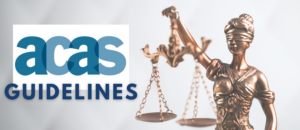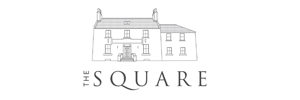
Confused about your Health and Safety responsibilities? We’re here to help. For small or new start-up businesses, you might be…

Outsourced Payroll Simplified Payroll Solutions and Services for UK companies with our low fixed fees, we help keep costs to…

We provide online Health & Safety and HR Compliance courses! These courses now start from £19.99 plus VAT for standard…

Are you managing your GDPR implementation internally but need some support? We offer a GDPR Compliance Pack. This is ideal…

Essential learning solutions for business owners and line managers Our courses are perfect for upskilling individuals, and they can also…
Whenever a company or organisation is carrying out an investigation, usually one of the first questions to consider is whether any of the employees involved should be suspended. This was once considered a step that would not carry serious legal risk provided the contractual terms were abided by and the employee continued to be paid salary and benefits. If the contract had a suspension clause, so much the better.
However, several cases over recent years have indicated things may not be that simple. If an employer is adjudged to have unreasonably suspended an employee, that can constitute a breach of the implied term of mutual trust and confidence, and this can entitle the employee to claim constructive dismissal.
ACAS issued some important revised guidance on suspensions on 8 September 2022. It is primarily geared towards ‘business owners’ although it would be applicable for most employers and contains some advice for employees.
The new guidance helpfully incorporates the principles that should govern any decision to suspend and the process that ought to be gone through before doing so. Should any suspension come to be reviewed by a court or tribunal, it is likely to be helpful for an employer to be able to show they had considered it and sought to comply with its terms.

The guidance looks at five major steps in the decision-making process:
What is striking is the extent to which the guide exhorts the employer to take the decision to suspend very seriously and the emphasis on the impact suspension can have on individuals’ mental health and wellbeing. There are numerous references to an employer having to consider each situation “carefully”, advising suspension will “only be needed in some situations”.
It advises employers not to “use suspension automatically” and that “it's usually best to avoid suspension if possible”. The guidance stresses the effect that suspension can have on an employee, advising that it can be “stressful” and that the employer should “consider the wellbeing and mental health of anyone they’re thinking of suspending”. It says they should only suspend if there is “no other option”. Ultimately, if the employer does decide to suspend, they should “plan what support they’ll provide” to the person concerned.
The guidance appears designed to redress the balance away from a ‘knee jerk’ move to suspend (employees are entitled to “something better” than that, as stated by Lady Hale in Gogay v Hertfordshire CC (2000). In the past, suspension may have been seen to be, at least on the face of it, a ‘neutral act’. However, it has been recognised for some time that in practical terms that is simply not the case. The reality is that suspension can have a serious effect not only on an individual's work, but possibly their future career as well.

Businesses will never have been advised to be cavalier about the decision to suspend. Recent cases have undoubtedly shown how difficult the decision can sometimes be should it be contested.
It is possible that this new guidance from ACAS marks something of a step change in the approach that is likely to be taken in future in relation to suspension cases. It most certainly does not mean that employers are going to be prevented from suspending employees when carrying out an investigation. Often that is the correct course; for example, to ensure evidence is preserved or witnesses are not interfered with. But it does mean that the suspension process should be comprehensive and carefully considered.
As a result, it is advisable for employers to record in writing the steps they have taken in deciding whether to suspend an individual (if they are not already in the habit of doing so), including the factors they have considered, perhaps with explicit reference to the guidance.

This would provide a helpful record of the fact that the guidance has been considered and the decision to suspend was not taken lightly if it were ever subject to challenge.
Employers may additionally want to indicate what steps they have taken to safeguard the mental wellbeing of the suspended individual. This would not only further indicate compliance with the guidance but would also strengthen the employer’s position that it continued to comply with the implied duty of maintaining trust and confidence with the suspended person.
First Floor, Office 20,
Balmoral Hub, Building 1,
Balmoral Business Park,
Loriston, AB12 3JG

Copyright © 2022 hrhubplus.com. Registered Office: First Floor, Office 20, Balmoral Hub, Building 1 , Balmoral Business Park, Loriston, Aberdeen, Scotland, AB12 3JG. Registered in Scotland SC584928.
| Cookie | Duration | Description |
|---|---|---|
| cookielawinfo-checkbox-analytics | 11 months | This cookie is set by GDPR Cookie Consent plugin. The cookie is used to store the user consent for the cookies in the category "Analytics". |
| cookielawinfo-checkbox-functional | 11 months | The cookie is set by GDPR cookie consent to record the user consent for the cookies in the category "Functional". |
| cookielawinfo-checkbox-necessary | 11 months | This cookie is set by GDPR Cookie Consent plugin. The cookies is used to store the user consent for the cookies in the category "Necessary". |
| cookielawinfo-checkbox-others | 11 months | This cookie is set by GDPR Cookie Consent plugin. The cookie is used to store the user consent for the cookies in the category "Other. |
| cookielawinfo-checkbox-performance | 11 months | This cookie is set by GDPR Cookie Consent plugin. The cookie is used to store the user consent for the cookies in the category "Performance". |
| viewed_cookie_policy | 11 months | The cookie is set by the GDPR Cookie Consent plugin and is used to store whether or not user has consented to the use of cookies. It does not store any personal data. |












